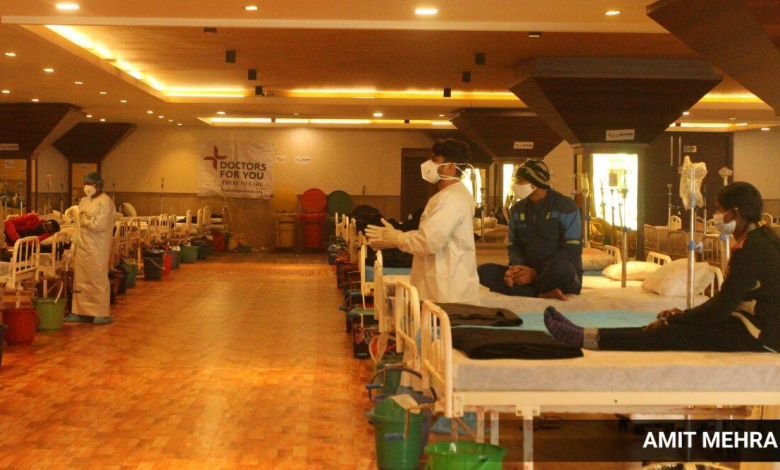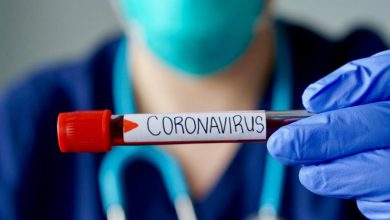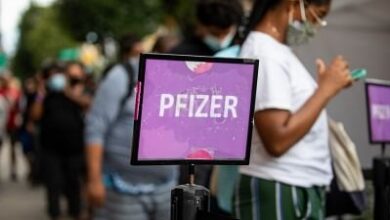Health ministry flags Covid-19 concerns in 6 states, virus spreading rapidly
The health ministry said that a sharp surge in Covid-19 cases continued to be noted in India, with the weekly positivity rate touching almost 16% mark in the last one week.

- The ministry specifically flagged that six states continue to remain areas of concern due to an increase in the weekly positivity rate in the week ending January 2
The health ministry said that a sharp surge in Covid-19 cases continued to be noted in India, with the weekly positivity rate touching almost 16% mark in the last one week. Highlighting that as many as 515 districts across the country have reported more than 5 percent positivity rate in the last one week, the health ministry Thursday said the third wave triggered by the highly-infectious Omicron variant has spread to almost all parts of the country. However, despite the surge, there has been fewer hospitalisations and deaths owing to high vaccination uptake.
The health ministry said that a sharp surge in Covid-19 cases continued to be noted in India, with the weekly positivity rate touching almost 16% mark in the last one week.
“The pandemic situation shows that the third surge is now spreading in almost all parts of the country. It is also clear that the deaths are low. Vaccination has acted as a shield…the mortality is significantly low…However, the overall positivity of 16% is quite high. There are some states with 50% percent positivity (Goa)….the virus is spreading rapidly. Vaccination and masking have to be adopted. We cannot lower the guard,” Dr V K Paul, head of India’s Covid-19 task force, said. The ministry said in the week ending January 19, 515 districts across the country reported positivity rate as compared to 335 districts in the week ending January 12.
The ministry specifically flagged that six states continue to remain areas of concern due to an increase in the weekly positivity rate in the week ending January 20 as compared to the weekly positive rate reported in the week ending January 13: Maharashtra (20.35% vs 22.12%); Karnataka (6.78% vs 15.12%); Tamil Nadu (10.70% vs 20.50%); Kerala (12.28% vs 32.34%); Delhi (21.70% vs 30.53%) and Uttar Pradesh (3.32% vs 6.33%). “These are the states with whom we are in continuous contact and we are reviewing the situation. We have sent central teams to these states, who have visited various districts. The health administration of the states have been briefed,” Bhushan said.
Read |Kerala records highest ever daily Covid-19 cases at 46,387; TPR surges to 40%
On Thursday, Bhushan highlighted that despite a sharp increase in the number of cases, there have been fewer hospitalisations and deaths owing to high vaccination uptake. “On April 30, there were 3.86 new cases reported every day during the second surge, there were around 3,000 deaths. During the period of April 1 to April 30, only 2% in the country were vaccinated. On January 20, there are 3.17 lakh new cases and 380 deaths. At present, 72% have been completely vaccinated. Two aspects emerge from this comparison: compared to the second surge, the number of deaths proportional to the active cases is significantly low; second….there is an impact of vaccination. In the fully vaccinated, the disease is mild or moderate. That’s why it is important that those who haven’t been vaccinated should get it,” Bhushan said.
Bhushan also emphasised that the symptoms have been milder during the current surge. “Around 99% adults have fever, with or without rigors (shivering), cough, and irritation in the throat. And, usually by fifth day, the symptoms are resolving. There are muscular weakness and tiredness. These are the symptoms we are seeing during the current surge in Delhi and we think the entire country (as well). In paediatric patients, those between the ages of 11 and 18 years, fever and upper respiratory tract infection is common, meaning the infection is not affecting the lungs. And, cases of Covid-19 pneumonia are also very less,” he said.
Pointing out that the increase in active cases has not resulted in huge burden on the health systems in current surge, Bhushan, referred to the situation in Delhi: hospitalisation have remained between 1,600 and 2,600 between January 9 and January 19 even when over 75 thousand active cases were seen. “It is a straight line at the bottom,” he said, referring to the graph that showed a comparison on active cases, daily cases, and hospitalisations in Delhi.
Paul, however, reiterated, that even in the “relatively low mortality phase” of the pandemic, people with comorbidities and the elderly continue to remain vulnerable and should get vaccinated. Paul also raised a red flag that there are 10% people over the age of 60 years who are yet to get their first dose and 25% who are to get their second dose.Providing data from 2020 and 2021, Bhushan also said that there was no change in the contribution of children towards the total cases and deaths in the country. “Now, we have the experience of more than 2.5 years of seeing this pandemic. If you look at the 0 to 19 age group, in 2020, they contributed to 10% of the total cases and 0.96% of total deaths. In 2021, 0 to 19 years contributed to 11% of the total cases and 0.70% of the total deaths happening because of Covid-19. So, you would see, that between 2020 and 2021 there is not much of a difference in terms of contribution of total cases or deaths,” he said.Dr Balaram Bhargava, director general of the Indian Council of Medical Research, said, “The overall test performance in the country is being maintained at a level comparable with the second wave. What is important to note is that we have noted an increasing uptake of home tests… In the whole of 2021, we saw only 3,000 home tests that were used. And, in these 20 days, we have seen 2 lakh home tests which have been used. Few districts are witnessing a dip in test numbers and have been encouraged to ramp it up.”






